Gearing up for your first-ever flight? Whether you’re traveling 45 minutes from home or 16 hours across the sea, taking your first flight can feel more than a little daunting. But that doesn’t mean it has to be. Flying isn’t half as scary as movies like Flight or Snakes on a Plane would have you think. It can even be fun, with your time in the air spent relaxing, watching movies (not the plane disaster ones), and even snoozing above the clouds. But to get there, you have to get through everything else first. Luckily, Next Vacay is all about making travel easier, including for the uninitiated. So, we’ve compiled a list of our best tips and answers to the most frequent questions for first-time flyers. This essential guide will make your first time at 30,000 feet feel like your 30th time in the sky.
This post may contain affiliate links. Making a purchase through our site may earn us a commission at no additional cost to you. This does not affect the independence or quality of our content.
Table of Contents
15 Tips for First-Time Flyers
Flying comes with its fair share of do’s and don’ts, and figuring out how to navigate it all can be stressful, especially when you consider that you’re doing it all for the first time. But rather than scouring the internet, much like a Next Vacay deal, you can sit back and let these tips come to you. This list of 15 essential tips for first-time flyers will help you conquer your first flight with ease.
10 DO’s for First-Time Flyers
From the obvious to the obscure to the easily forgotten, here are ten tips every first-time flyer can do to make their first flight more stress-free before even leaving the house.
Do: Check-in Online

Make your trip easier by checking in online. Most airlines allow you to check in 24 hours before your flight. You’ll then receive a digital boarding pass with your flight number and gate. A digital boarding pass allows you to skip the long check-in lines at the airport and will often update itself so you can keep an eye on your gate number for changes. If you prefer to check in at the airport, some airlines have mobile-friendly kiosks available to let you do everything yourself, from checking in to printing your boarding pass and luggage tags. It’s a great way to save time and skip the lines. But, if you’d prefer a more personal touch, you can head to the customer service counter and get help from an experienced hand.
Do: Arrive Early at the Airport
If it’s your first time flying, you’re in for an experience. Airports are a special kind of beast, often bustling with people and boasting confusing layouts that differ from one to the next. Add to all that unexpected traffic delays and long security lines, and you have just a handful of reasons why it’s a good idea to arrive at the airport early.
The rule of thumb for arriving early at the airport is to get there at least two hours before your flight. However, this can change depending on whether the flight is domestic or international and what time of year you’re flying. Plan to arrive even earlier if you’re heading out on an international flight instead of a domestic one. International airports all but guarantee longer check-in and security lines and also a lot more ground to cover. In short, it’s better to end up sitting around the airport for a few hours than to cut it too close and miss your first flight.
Do: Keep Your ID Handy
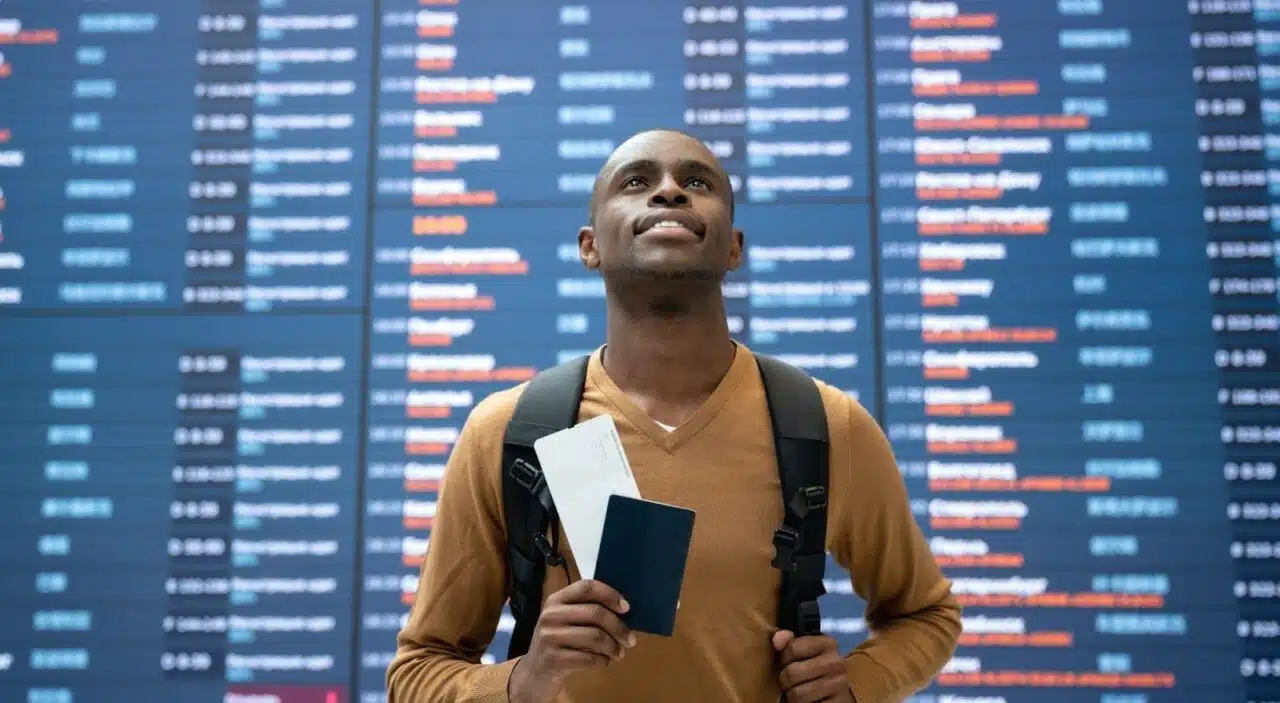
From check-in to boarding the plane, you’ll have to present your identification and travel documents several times as you make your way through the airport. So it’s important to have them readily available. The last thing you want is to be fumbling to get your ID or passport out of however many zippered pockets you have it tucked away in while the TSA officer/airline employee stares you down and the growing line behind you starts grumbling in your ear. Ditch the stress with an organizer like the Melsbrinna Passport Holder to keep your travel documents easily accessible at all times. You’ll be in and out of the airport checkpoints in a blink and breezing through the airline with ease.
Do: Wear Shoes That Are Easy to Remove
Unless you have TSA PreCheck, you can expect to remove your shoes as part of the security process. Wearing shoes that easily slip off, such as sandals or sneakers, is a must for saving time and getting through quickly. While you’re at it, plan to wear socks with your shoes if possible so you’re not walking over the cold and presumably dirty airport floor with your bare feet. If you’re not sure what shoes to take on your trip, check out our tips for finding the most comfortable shoes to wear while traveling.
Do: Pack Essentials in Your Carry-On

This is one of the most essential tips for first-time flyers we can think of. Imagine the airport loses your luggage; just like that, your laptop, contacts, medicine, and clothes are all gone. But you can avoid all that unneeded stress by doing what the pros do: packing all those essentials in a carry-on that travels with you on the plane. Having these things by your side at all times immediately mitigates the low hum of worry constantly buzzing in the back of your mind that the airline might possibly lose your luggage or put it on the wrong flight.
Flying without a carry-on? Consider that a carry-on might be the perfect travel bag to save you time and stress on your travels. But if you’re set on a checked bag, then try fitting these items and a few clothes in a personal bag. All airlines allow passengers a personal item, the only requirement is that it must fit under the seat in front of you. While that may not seem very impressive, you’ll be surprised just how much you can fit in such a small space with the right personal item, like this LOVEVOOK Laptop Backpack, which makes packing the essentials a walk in the park.
Do: Check That Your Baggage Fits the Airline Requirements
Baggage requirements differ by airline, so unfortunately, there isn’t a one-size-fits-all you can apply to every flight unless you’re always flying with the same carrier. That goes for checked baggage and carry-on luggage, but almost all airlines allow a personal item that fits under the seat in front. As for checked bags and carry-ons, it varies. Sizes, weights, and what is included for free can change from carrier to carrier and based on your ticket fare. Always look up the requirements and double-check that the luggage you bring fits them so you don’t have to pay a fee or throw things out because you’re over the weight limit.
Do: Pack Layers for the Plane

As one might expect, flying above the clouds can get quite chilly, especially if you have a seatmate with the air on full blast. Plan to bring a few layers—a cardigan, jacket, or even a blanket—onto the plane to keep comfy. Outside of the airplane temperatures, another thing to keep in mind is the change in weather between your origin city and destination city. While your shorts and flip-flops may fly under Florida’s sunny skies, a snow-covered New York will be far less forgiving. So, wear clothes that are easy to layer up or that can be easily shed in the airport restroom. That way, making the transition from hot to cold, or vice versa, is nothing but a cakewalk.
Do: Stay Up-to-Date on Your Itinerary and Flight Status
Flight statuses change all the time. Sometimes, your plane might be delayed getting in, or it could be delayed at the gate. Whatever the case is, it can affect when your plane departs. So, it’s best to keep an eye on your flight status. The most convenient place to check is online/on the airline app. It’s helpful to know before you leave the house and even while wandering the airport if your flight is on schedule so you can be at the gate when it’s time to board.
It’s also helpful to provide your flight information to anyone picking you up. By tracking delays and your estimated arrival time, they can coordinate when to arrive instead of circling the lot while waiting for your plane to land.
Do: Bring Your Own In-Flight Entertainment and Comfort
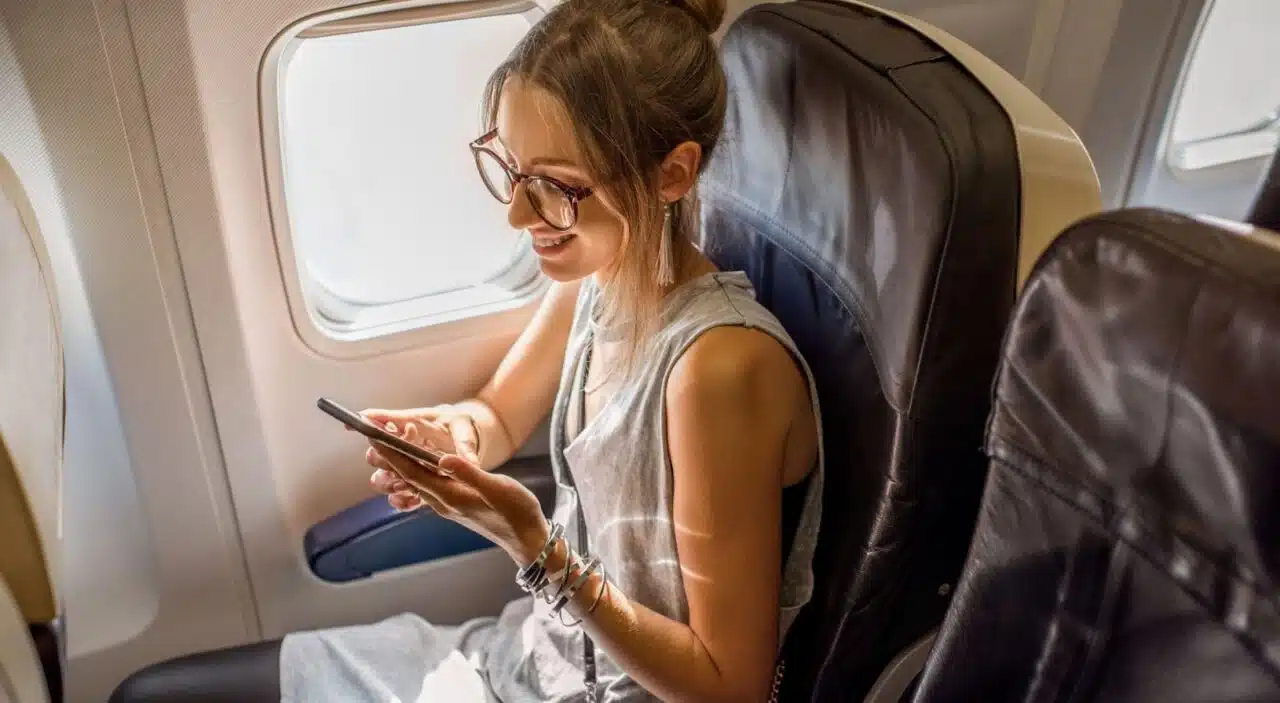
Flights can be long, and not every flight or every airline promises free Wi-Fi or in-flight entertainment—unless you’re flying JetBlue. So bringing your own is a must. Pack your phone or tablet with your favorite movies or shows already downloaded so you can watch offline. This is also a great time to download your favorite playlist, podcast, or audiobook, and nothing beats a good old paperback.
If you plan to sleep the hours away, don’t forget the little things to make getting your beauty rest a bit easier, like a comfy neck pillow, noise-canceling headphones or earplugs, and an eye mask. You’ll be all but guaranteed to spend your first time at 30,000 feet nodding off among the clouds.
Do: Pack Food and Water
Hydration is key when traveling, especially on long international flights. Pack a reusable water bottle like this CamelBak MultiBev Water Bottle & Travel Cup to cut down on plastic use and stay hydrated on the go. You can pack it in your carry-on or personal item and fill it up after security to have it with you on the flight. Just be sure the bottle’s empty on your way through or you may have to throw it away or leave the line to dump it. Bringing your own water can also help you avoid purchasing water at the airport, where it’s more expensive, or from having to rely on the flight attendants for a drink while you’re up in the air.
Along with a water bottle, consider bringing some of your favorite snacks aboard the plane. Snacks can often be a costly indulgence at the airport, and most flights only offer a meager bag of pretzels or nuts. If the sound of that doesn’t make your mouth water, you’re not alone. Luckily, sealed bags and containers of food are allowed through security, so you can pack up homemade trail mix, your favorite cereal in a baggie, granola bars, and even candy bars to munch on during your flight.
5 DON’Ts for First-Time Flyers
Just as every good list of tips has its do’s, there are quite a few important don’ts that all first-time flyers need to keep in mind. So before you buckle up, and even before you pack up, here are five key tips for things that first-time flyers should NEVER do.
Don’t: Forget Your Travel Documents
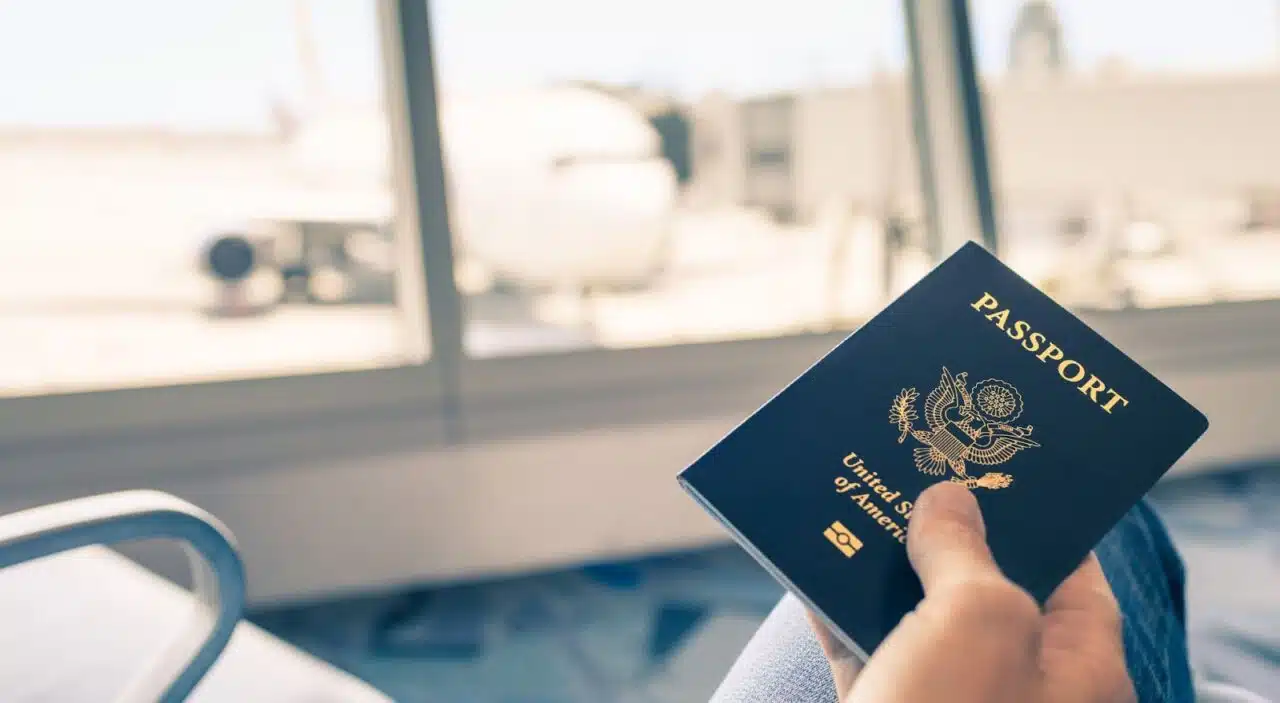
Your travel documents are your gateway to the world. If you leave them behind or lose them, you could be denied boarding or barred from entering your destination. So before you leave, do a document check.
- Driver’s license (or other accepted REAL-ID)
- Passport
- Travel visa
In addition to the physical documents, double-check that you have digital versions of your boarding pass, travel itineraries/confirmations, and travel insurance. Keep in mind that while you can get a physical copy of your boarding pass printed at the airport, some budget airlines charge a fee to do so.
Don’t: Overpack
Overpacking is a cardinal sin of flying. And while it’s easy to forget, this is one thing that immediately costs you—quite literally. Airlines love charging overweight baggage fees; you could even get stopped at security if your carry-on bag is too overstuffed. So, to avoid the additional fees and added stress, be meticulous about your packing list, even downright cutthroat if you have to be. Focus on reusable pieces you can layer or mix and match, and don’t pack twice as many outfits as you’ll actually need for your trip.
Don’t: Forget to Weigh Your Bags at Home
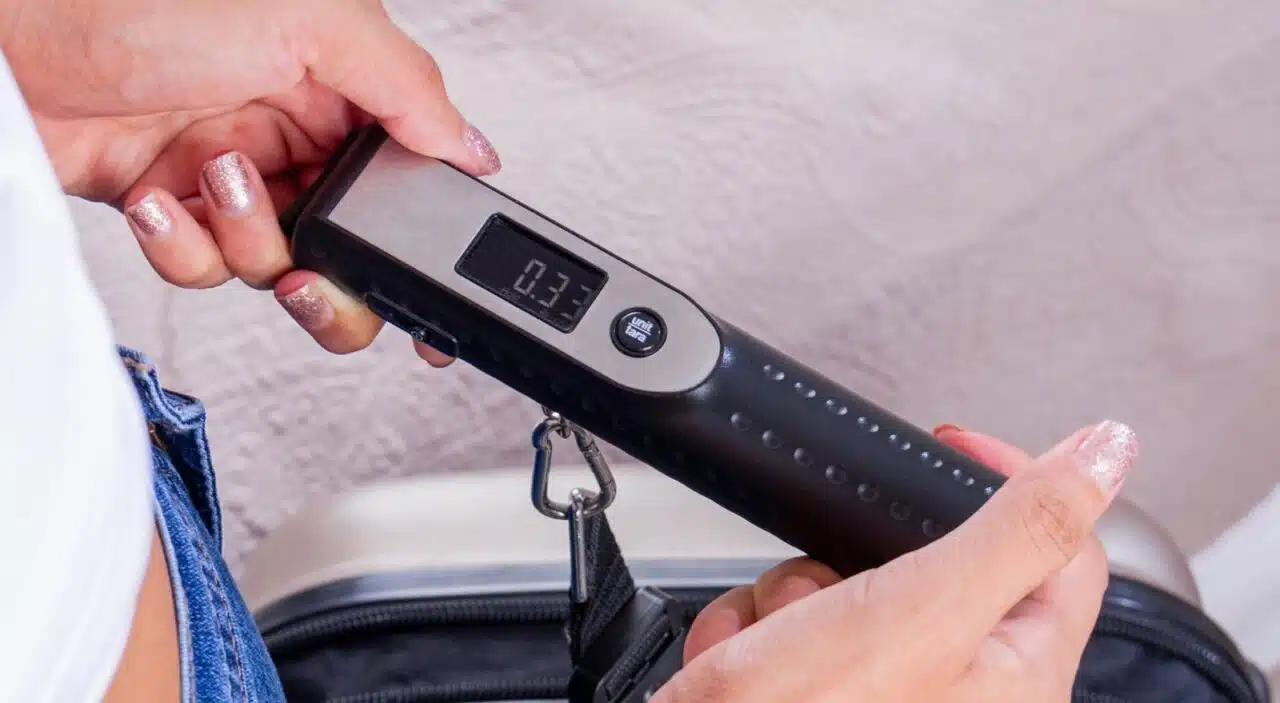
This tip for first-time flyers does a bit of piggybacking off the last one. If you overpack, you risk exceeding the permitted weight limit and getting hit with excess baggage fees. These often cost more and sometimes even double the original baggage fee! So, to avoid that stress, and the blow to your wallet, weigh your bags before you fly. While you can use a regular scale to give you a ballpark estimate, a convenient, portable scale like this Travel Inspira Digital Luggage Scale will help grant you some peace of mind on the go and give you the reassurance that, yes, you can pack that one extra souvenir you’re bringing home without paying a fortune in baggage fees.
Don’t: Leave Your Bags Unattended
This is a universal rule you’ll hear shared over the airport loudspeakers from time to time. And while it seems pretty commonsense, you may be surprised how often it happens, between quick trips to the restroom and last-minute food runs. Leaving your bags unattended may seem innocuous, but it poses a major security risk to the airport and could result in security confiscating your bags. So, to prevent that and avoid getting caught up in security issues, always keep your bags with you at the airport.
Don’t: Ignore the Safety Briefing
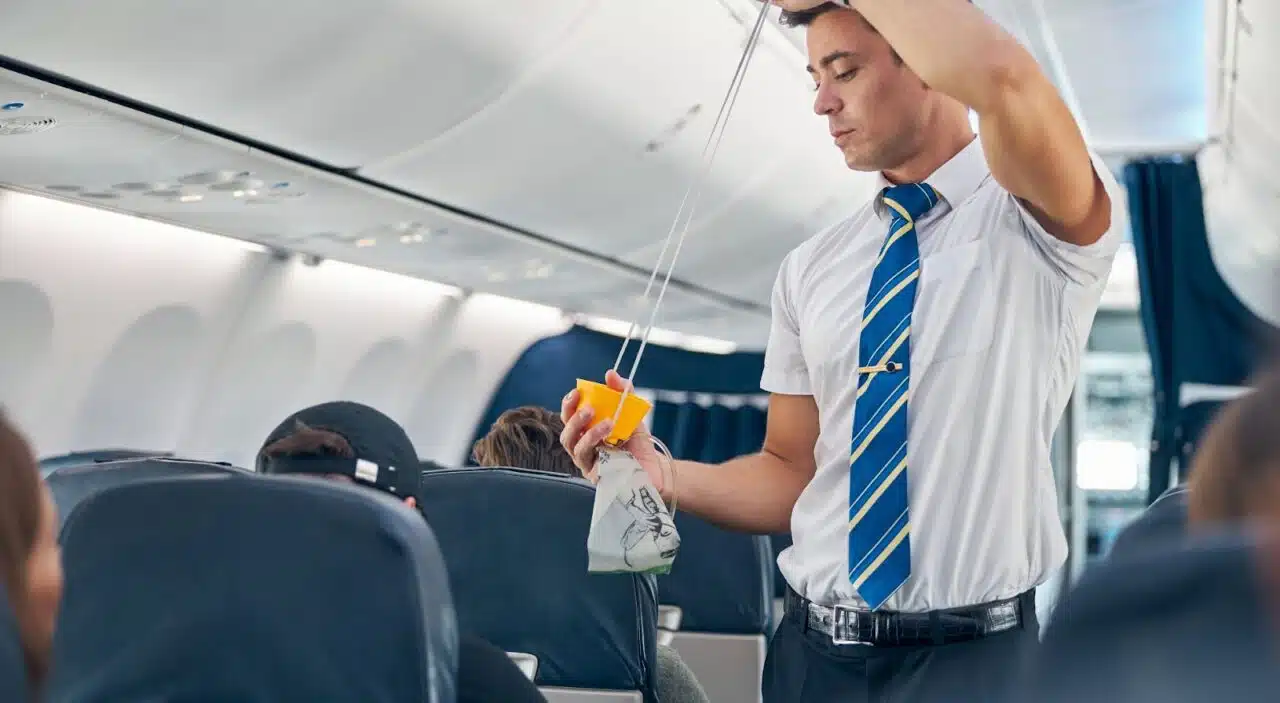
If it’s your first time on a plane, then one thing you shouldn’t do is ignore the safety briefing. Flight attendants perform this briefing before every flight, and while you might see seasoned flyers checked out during this time, the information conveyed is invaluable for first-time flyers. The safety briefing outlines what passengers should do in case of an emergency and where the exits are located. While it’s unlikely your plane will be evacuated, as the saying goes, it’s always better to be safe than sorry.
First-Time Flyer FAQs
Now that you’re well-versed in all the must-know tips for first-time flyers, you may still be left with some questions. That’s normal. Flying can be a bit of a sensory overload, and it’s not always easy knowing what you need to know. So here are some frequent questions that often come up for first-time flyers.
Do I Need Travel Insurance?
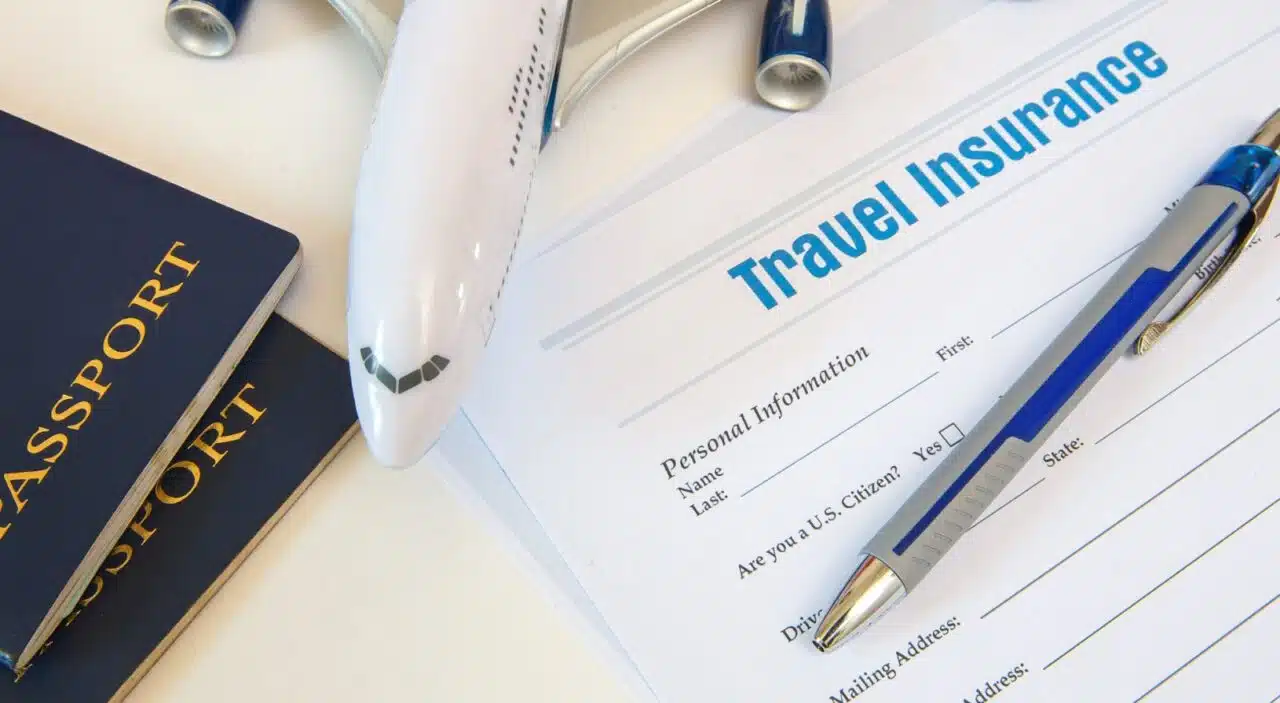
After all the time and money you put into your trip, you don’t want it all to go to waste. In that regard, travel insurance is a great addition to any flyer’s checklist, especially if you’re dealing with the anxieties of your first flight. Travel insurance can offer added peace of mind as you try to navigate this new experience.
Some travel cards come with insurance coverage for travel purchases made on that card. However, it’s important to note these insurances often have limited coverage. You might feel more comfortable getting separate travel insurance for your trip depending on the amount of time and money you put into it.
Next Vacay Pro-Tip: Travel insurance isn’t the only way to protect your trip. Set yourself up for success by arriving early, planning for possible setbacks like missing your flight, and setting aside an emergency cash fund for any unforeseen expenses that crop up.
What’s the Security Screening Process Like?
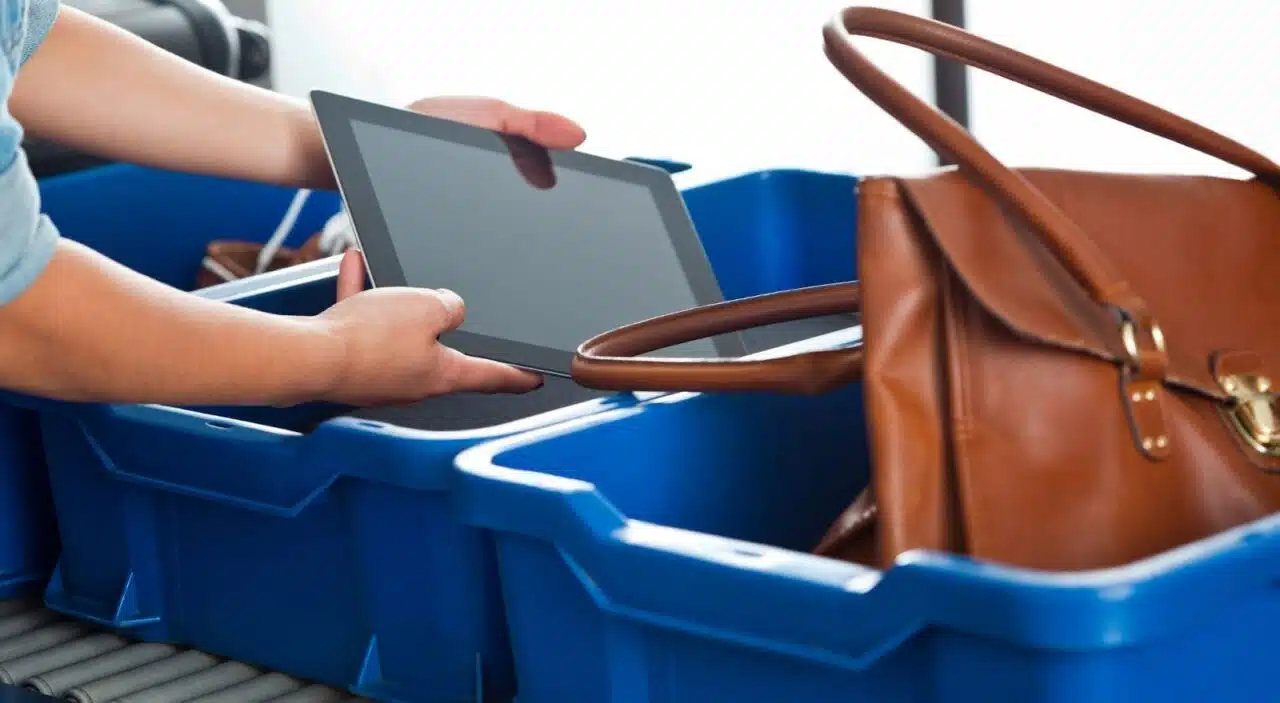
First-time flyers might be anxious about the screening process, but in truth, it’s nothing to be nervous about. Travelers without TSA PreCheck enter the standard line and must present a license (or other approved form of ID) and their boarding pass to the TSA agent. Have these out when you get there. After getting your travel documents checked, you’ll go through the screening process. This involves removing your shoes and putting your items on the conveyor belt to be scanned.
Once all your items are prepped for screening, you’ll wait for the TSA agent’s OK and step into the X-ray machine. Directions are usually posted on the machine so you know exactly where and how to stand. If there are any bulky spots on your clothes or you’re wearing your hair in a bun, you may be waived to the side for a pat down. Don’t stress—this happens more often than you might think. Once you’re checked over and cleared, you can gather your items, slip your shoes back on, and you’ll be on your way.
How Do I Get Through Security Screening Faster?
Properly prepping for security will ensure everything goes smoothly when it’s your turn. Double-check that your liquids don’t exceed 3.4 ounces and all fit in a clear, quart-sized bag. Remember to empty your pockets and remove any extra layers before going through screening. Electronics and your personal item go in security trays. Shoes go directly on the belt. In addition, try wearing a non-bulky hairstyle and clothing to avoid a pat down.
What’s the Best Luggage to Travel With?
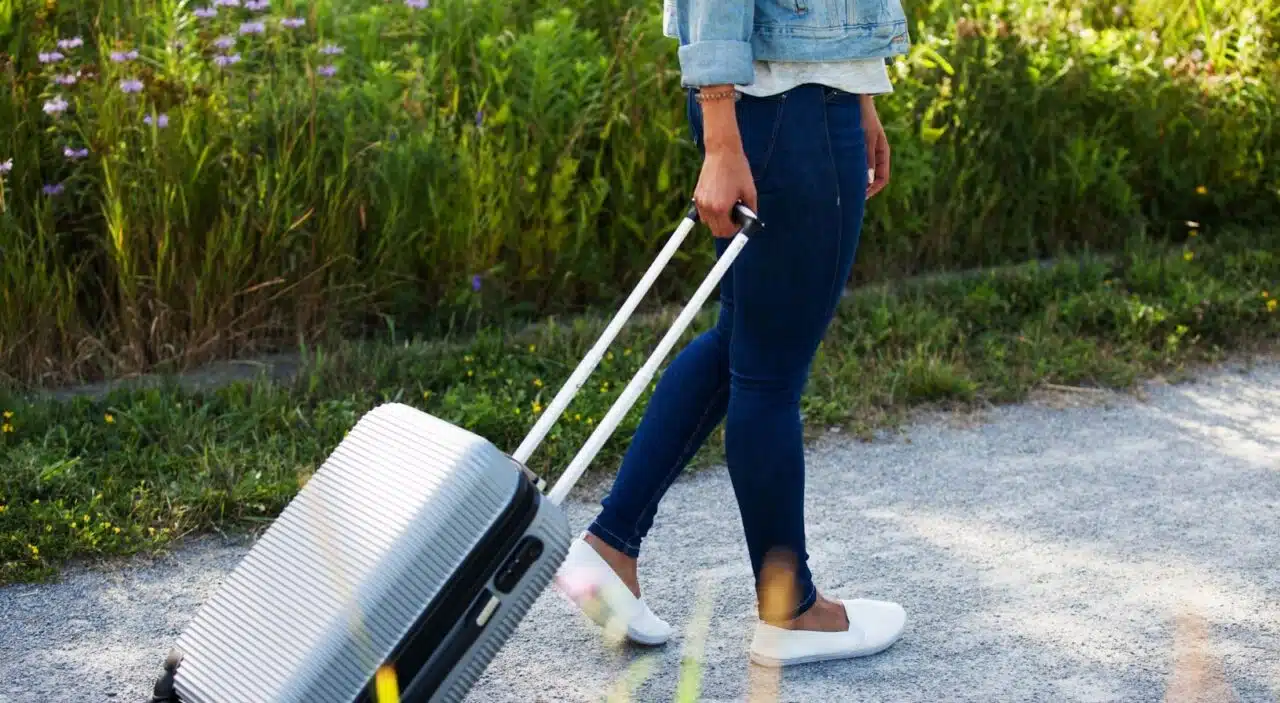
The best luggage to travel with is a carry-on bag. Why, you might ask? The answer is many reasons. The first is that carry-on luggage goes on the plane with you, thus eliminating the hassle of checking a bag, including picking it up upon arrival or risking the airline losing it entirely. It also cuts down on costs, as most airlines rarely include baggage in their flight prices—unless you’re flying first class, of course. Lastly, it’s a great reminder to pack light and only take what you need on your vacation.
Where Should a First-Time Flyer Sit?
There’s no one-size-fits-all seat for first-time flyers. It all comes down to what will be most comfortable for you. If you’re worried about turbulence, try nabbing a seat in the middle over the wings of the plane. If you want more legroom, try the emergency exits. However, bear in mind that you have to be over 16 years old to sit in the emergency exit rows, and you’ll be expected to assist in cases of emergency. If you’re worried your seat could make or break your first flight experience, check out these pro tips for choosing the best seats on a plane.
What’s the Difference Between a Nonstop and a Connecting Flight?
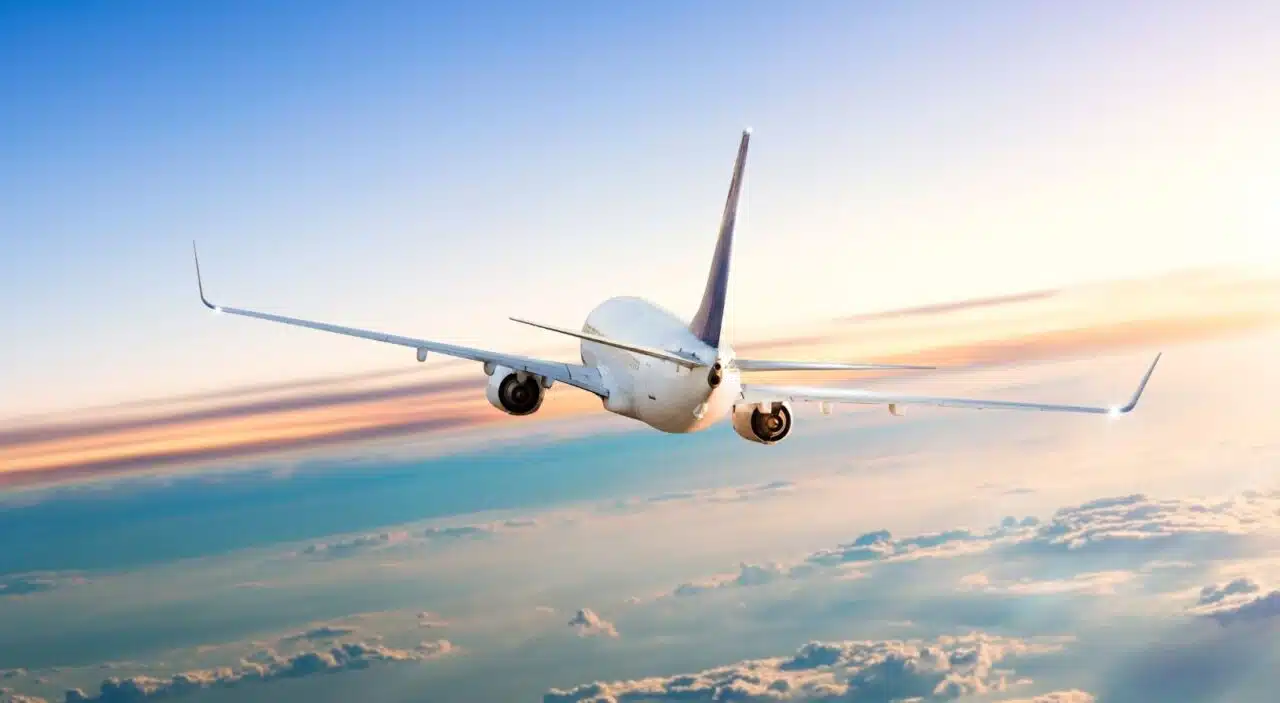
Despite both getting you from point A to point B, nonstop and connecting flights offer very different experiences. Nonstop flights mean exactly that. There are no stops between your first and final destination, meaning you travel in a, relatively speaking, straight line. On the other hand, connecting flights often involve a detour, a point AB if you will, at which you usually have to deboard and board another plane to reach your final destination.
As a first-time flyer purchasing your first flight, choosing between a nonstop flight and a connecting one can be challenging. While nonstop flights offer convenience and less stress, they can be pricier, and depending on the route, there are fewer available. In contrast, connecting flights provide many more options and flexibility with departure and arrival times. Still, the stress of having to catch a connecting flight could get your vacation off to a shaky start, so it’s something to keep in mind as you make your final decision.
How Does the Boarding Process Work?
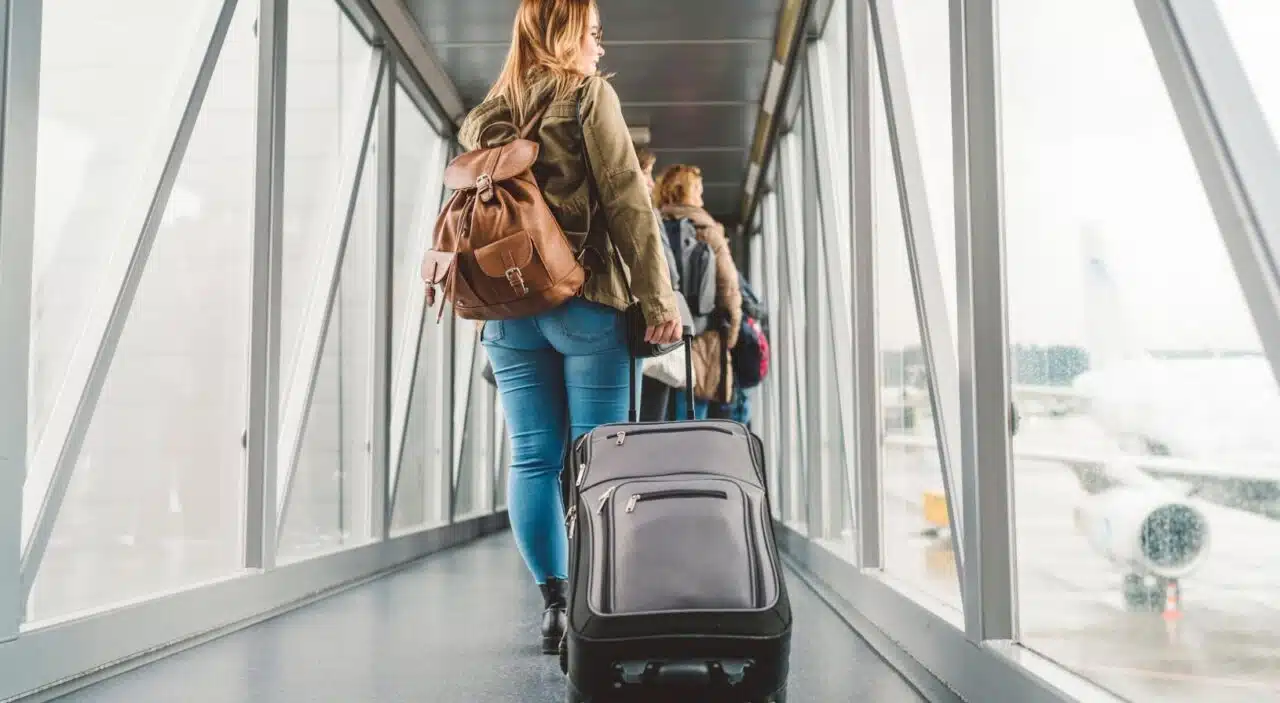
Most flights begin boarding 30-50 minutes before departure. Domestic flights usually board closer to the departure time. In contrast, international flights begin boarding a bit earlier to accommodate the larger plane sizes.
Airlines often board in groups, which they designate on your boarding pass. When your boarding group is called, you’ll line up with other passengers in your group to board the plane. You’ll scan your boarding pass one last time with the gate agent and then pass through the door to the jetbridge to board. Most airlines will close the gate door 15 minutes before departure to ensure they remain on schedule, so here’s an important tip for first-time flyers: Don’t be late!
4 Tips to Go from First Timer to Frequent Flyer
Travel pros can make flying look effortless. Want to know how they do it? It doesn’t take much to get good at flying. And once you’ve ingrained our first time flyer tips into your brain, all that’s left is a few extra steps that can take you from an anxious first-timer to a calm and collected frequent flyer.
1. Join an Airline Rewards Program
Airline loyalty programs deliver significant perks, including free checked bags, priority seat selection, complimentary upgrades, and more. If you plan to turn your first flight into the first of many flights, joining an airline rewards program, or several, will ensure you get the most out of your miles. Joining is free and usually hassle-free. You can get set up in minutes and immediately start earning points with your very first flight. Some airlines, like Delta, even let you do it before by earning miles through partners, online shopping portals, and more. An airline rewards program is the way to go if you want to make future travel more comfortable and rewarding.
2. Get a Travel Credit Card
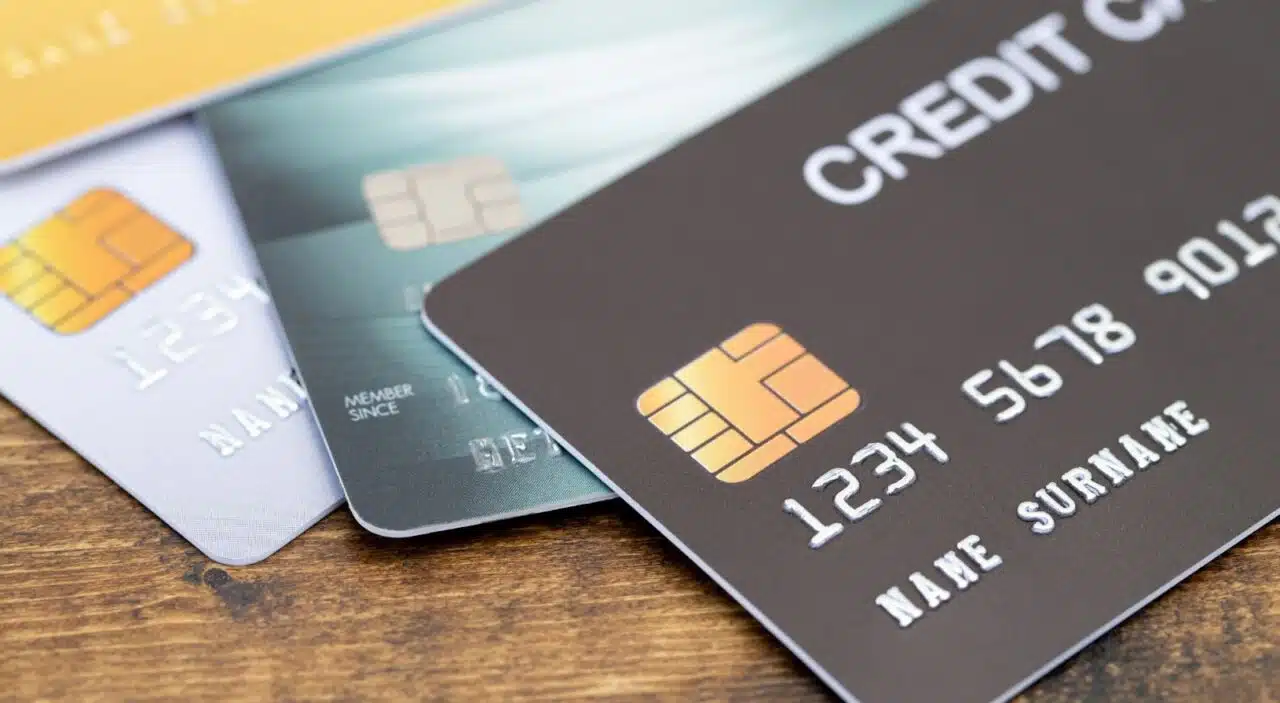
Travel credit cards are even more flexible than airline rewards programs, allowing you to earn points on travel and non-travel-related purchases. Travelers can choose between airline credit cards, hotel credit cards, and non-branded travel cards. The latter is the most flexible for earning and redeeming points as they work with various partners, not just one specific airline or hotel. While utilizing travel rewards is a bit of an art, it’s one worth learning to save hundreds of dollars on your future trips.
3. Apply for TSA PreCheck / Global Entry
Signing up for TSA PreCheck and/or Global Entry is your ticket to a stress-free security check and customs process. These government programs require an interview and application fee but include noteworthy benefits, like expedited security and customs lines and reduced wait times. If you want to decrease your time at the airport, TSA PreCheck and Global Entry are the way to go.
With TSA PreCheck, you can enjoy an expedited security process, with benefits like a designated security lane and getting to keep your shoes on. Global Entry does something similar, expediting your customs process and making your return to the US effortless. If you’re considering one or the other, Global Entry is the better option. Though the application process is more involved and a bit more expensive—$100 compared to the $78 you’d spend on TSA PreCheck—it includes TSA PreCheck as one of its benefits. So, whether you’re leaving the country or coming home, Global Entry makes getting through the airport a breeze.
4. Sign up for Next Vacay
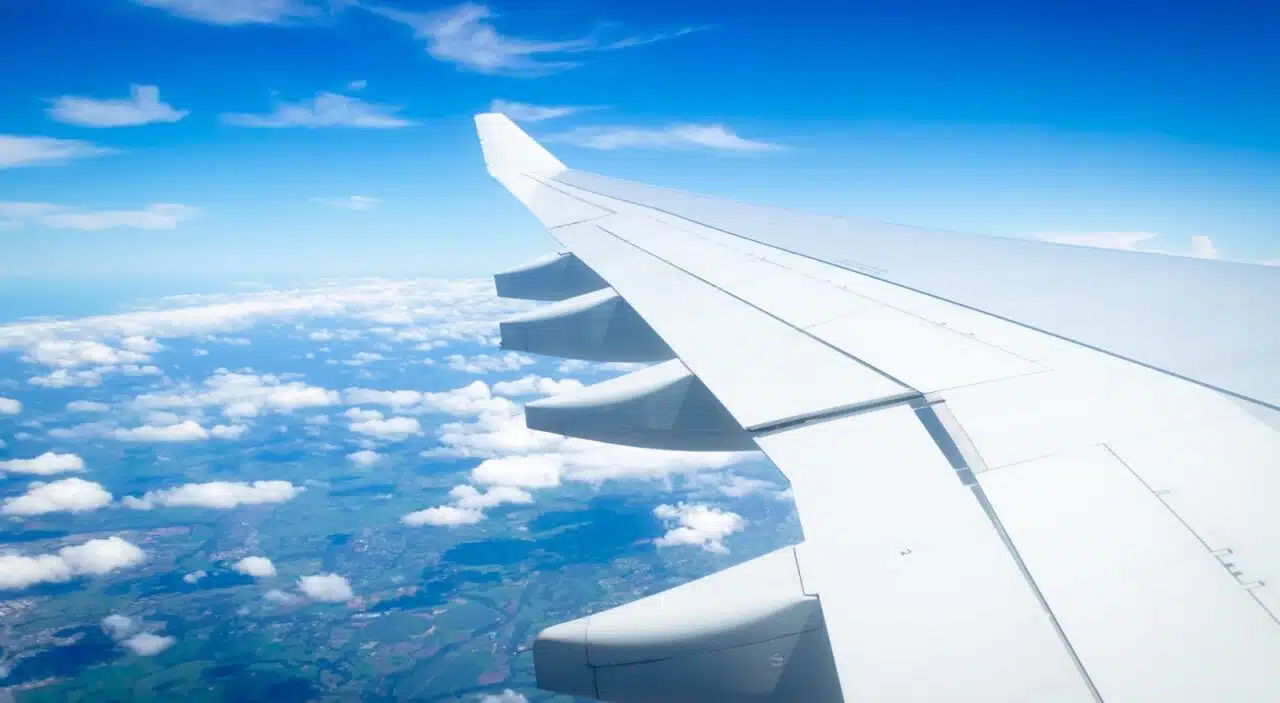
Want to save big on your first flight and every flight after? Here’s the best tip for first-time flyers: Sign up for Next Vacay.
Rather than stressing over finding the perfect flight—on top of taking your first flight and making sure it all goes off without a hitch—leave the flight searching to the professionals. Next Vacay has an entire team dedicated to finding the best deals to destinations all over the world and screening those deals for price, comfort, flexibility, and more. Our team then delivers those hand-vetted deals directly to your inbox, so you don’t have to lift a finger to do a thing except to press “Book.”
It’s never been easier to save money and travel the world. So start dreaming bigger and traveling farther than ever before with Next Vacay.



